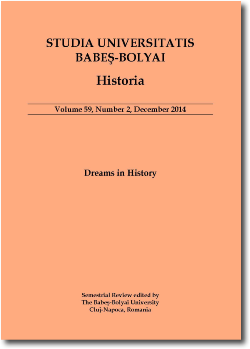URBAN CONSTRUCTION PATTERNS IN THE CITY OF CLUJ, 1952-1965
URBAN CONSTRUCTION PATTERNS IN THE CITY OF CLUJ, 1952-1965
Author(s): Călin-Andrei OlariuSubject(s): History, Recent History (1900 till today), Post-War period (1950 - 1989)
Published by: Studia Universitatis Babes-Bolyai
Keywords: architecture; urban planning; Housing District; Socialist Realism; micro-district; modernism.
Summary/Abstract: In the present study we intend to present the way in which communist authorities tried to solve the problems of the Romanian urban areas after the Second World War through recourse to urban planning. Between 1952 and 1965, there were two main construction patterns subsequently promoted in all communist countries from Central and Eastern Europe. The first one was that of the housing district in the style of Socialist-Realism architecture (accompanied by the construction of a limited number of monumental public buildings) while the second one was that of the micro-district (or microraion) in the style of modernist architecture. What we found out is the fact that at a local level, in the city of Cluj, these models were not always implemented in accordance with the discourse of the time and that the central authorities, through institutional and economical reform, tried to set the Romanian architecture on a course of ideological orthodoxy.
Journal: Studia Universitatis Babes-Bolyai - Historia
- Issue Year: 60/2015
- Issue No: 2
- Page Range: 51-76
- Page Count: 26
- Language: English

